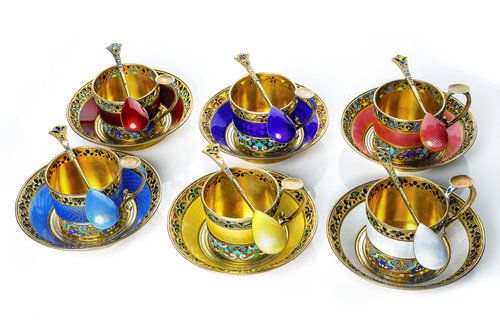Back in 2016, New York Post featured a story that forewarned many avid antique collectors about fake Russian collectibles. The news features a Miami couple who filed a suit against a New York art and antique dealer accusing him of selling them a fake Fabergé egg and other Russian collectibles for $400,000. The dealer told them that the $2,600 Plique-A-Jour spoon and $33,600 Cloisonne enamel tea set they bought were over 100 years old and had been used by Russian Czars.
Many such dealings make Russian silver antiques collectors in New York worry over fake Faberge antiques. Recognizing antique fakes is important to choose the right one, and avoid spending your hard-earned money on a fake antique.
- When buying a Faberge Antique, you must be familiar with its look and feel. Gander and touch as many Fabergé pieces as you can to detect the fake ones. When you allow pieces to talk to you, then detecting a fake one is not as difficult as many people think.
- Make sure to read the description that comes along with the piece to ward off any suspicion.
- Beware, fakes feel heavy in comparison to the real ones. The obvious clue in a fake Fabergé antique is it has sharp or rough edges.
- Evaluate the antique item from any store according to its age, rarity, and desirability.
- Check the patina. A true patina has a smooth variable surface, and the finish looks too perfect.
Above all, consider the price to find the authenticity of the piece. The pieces with high price have no guarantee of authenticity whereas a Russian silver Faberge in New York with super-low price is usually good to be true.


